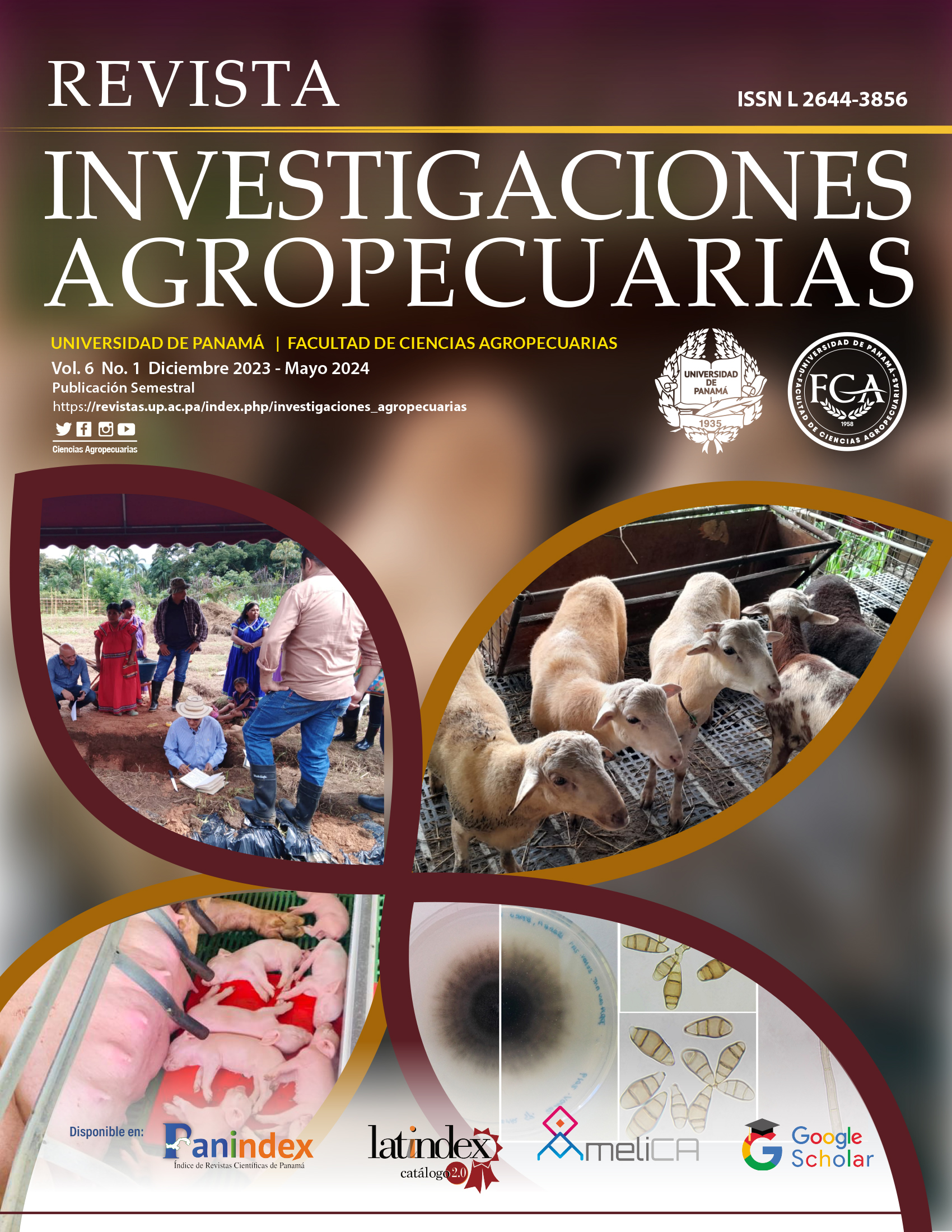

Copyright (c) 2023 Revista Investigaciones Agropecuarias

This work is licensed under a Creative Commons Attribution-NonCommercial-ShareAlike 4.0 International License.
The objective of this research was to identify at a taxonomic level species of phytopathogenic fungi Associates with four rice cultivars (Oryza sativa L.) in three rice-growing areas of Panama: Baru, Alanje and Guanico Abajo. Three codified cultivars located in the province of Chiriqui were evaluated: 1) yield 1, plot 12, locality Berba, Baru; 2) yield 1, plot 20, locality Berba, Baru; 3) yield 1, plot 2, Canta Gallo locality; and one variety located in the province of Los Santos: 4) cultivar Estrella 71, Guánico Abajo locality, Agricola DELI. Around 40 samples were collected throughout the dry and rainy seasons of 2016, 2018, and 2019, during the vegetative and grain ripening and filling phases. Isolations were performed in humid chambers and incubation in PDA, CLA and Water Agar culture media, to obtain pure cultures and subsequently characterize macroscopic and microscopic structures. The identification of fungal species was carried out using the taxonomic keys proposed by Ou (1985), Sivanesan (1992) and (Seifert, 1996). In the province of Chiriqui, the greatest number of species were identified, including Curvularia cf. lunata, Curvularia cf. geniculata, Bipolaris cf. oryzae, Nigrospora cf. oryzae and Fusarium sp in the region of Berba Baru, and in the region of Canta Gallo, Alanje, the species Nigrospora cf. oryzae and Bipolaris sorokiniana. Finally, in the province of Los Santos, in the locality of Guanico Abajo, the species Curvularia cf. verruculosa was identified. Of the previously mentioned phytopathogenic fungi, the genera Curvularia and Fusarium were isolated from grain samples, while the genera Nigrospora and Bipolaris were isolated from both leaf and grain tissue.